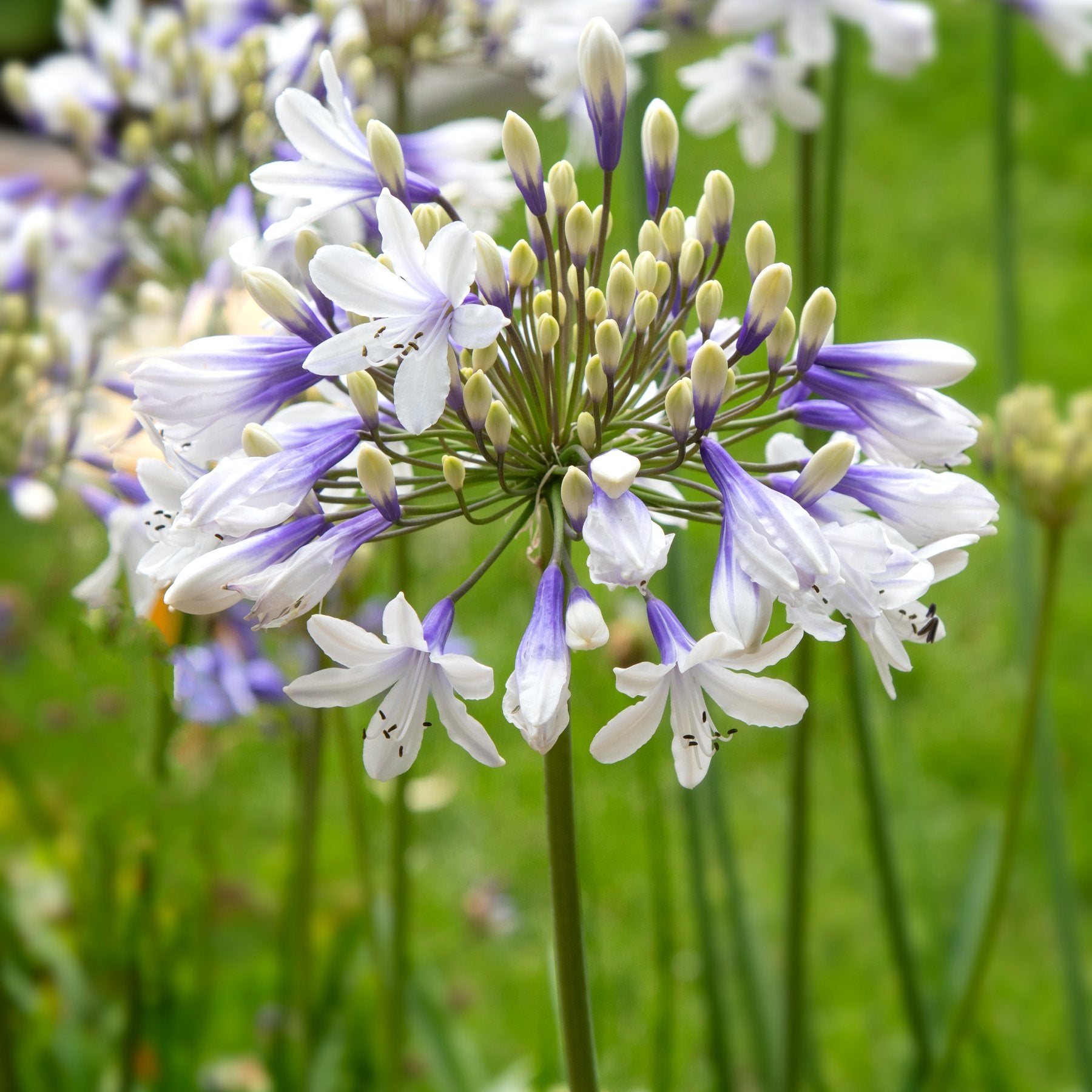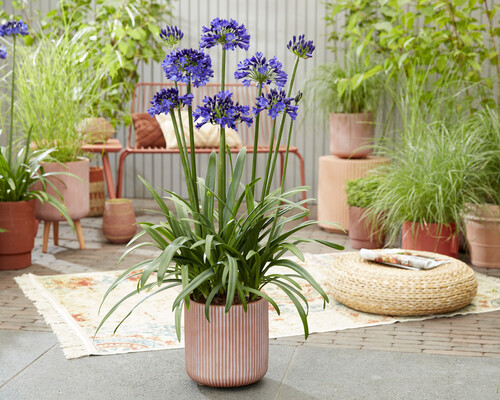Agapanthus Treatment Tips for Lush and Vibrant Flowers
Agapanthus Treatment Tips for Lush and Vibrant Flowers
Blog Article
Mastering the Art of Agapanthus Care: Crucial Steps for Healthy And Balanced Development and Lively Blossoms
In the realm of horticulture, the farming of agapanthus stands as a gratifying undertaking for those who seek to support these elegant blooming plants. From selecting the right selection to mastering trimming strategies, the journey towards growing prospering agapanthus plants is multifaceted and holds the key to opening the full possibility of these botanical gems.

Choosing the Right Agapanthus Selection

When picking the ideal Agapanthus variety for your garden, consider factors such as climate viability, blossom color, and growth routine. Additionally, think about the climate in your area to guarantee the Agapanthus range you choose can flourish in your specific conditions. Understanding the growth behavior of various Agapanthus ranges is important for proper placement within your garden.
Suitable Planting Problems
Thinking about the ideal environmental requirements is necessary for successful Agapanthus growing. Agapanthus plants are sensitive to cool temperatures and ought to be safeguarded from frost throughout winter months.
To make sure healthy development and lively blossoms, plant Agapanthus bulbs at a depth of about 2-4 inches and area them 8-12 inches apart. Including natural matter, such as compost, to the dirt can improve drain and fertility, promoting robust root development. Mulching around the base of the plants assists maintain wetness and subdues weed growth. Normal watering is crucial, particularly throughout the expanding season, to maintain the soil constantly damp but not waterlogged.
Watering and Feeding Tips
Preserving proper dampness levels and supplying important nutrients are essential aspects in the treatment routine for Agapanthus plants. When it comes to watering Agapanthus, it is critical to strike a balance. These plants like constantly damp soil but are prone to root rot if overwatered.
Feeding Agapanthus is important for promoting healthy and balanced development and prolific blossoms. Use a balanced fertilizer, such as a 10-10-10 formula, in the very early spring as new development emerges. Repeat this application every 6-8 weeks throughout the growing season. Stay clear of excessive fertilization, as it can lead to lush vegetation at the expense of blooms. Always adhere to the supplier's directions for appropriate dilution and application approaches. By adhering to these watering and fertilizing tips, you can ensure your Agapanthus plants flourish and create dynamic, durable blooms.
Trimming Methods for Agapanthus
Trimming Agapanthus plants at the suitable times and with correct techniques is critical for keeping their wellness and promoting ideal development and blooming. The perfect time to prune Agapanthus remains in late winter season or very early spring before brand-new Full Report development emerges. Start by eliminating any kind of dead or yellowing fallen leaves near the base of the plant. Cut them as short as possible without harming the emerging shoots.
Deadheading spent flowers can additionally redirect the plant's power right into generating even more blossoms rather than establishing seeds. If you desire to gather seeds for proliferation, leave some flowers to fully grown and completely dry on the plant.
Keep in mind to use tidy, sharp tools to make exact cuts and decrease the danger of introducing conditions. Agapanthus. Routine trimming will certainly help keep your Agapanthus looking neat and healthy and balanced while ensuring an abundant display of lovely flowers
Managing Common Insects and Conditions
After ensuring correct trimming strategies for Agapanthus, it is essential to address usual parasites and conditions that can influence the health and vitality of these plants. One usual bug that impacts Agapanthus is the Agapanthus gall midge.
Additionally, Agapanthus plants can experience from origin rot if they are grown in inadequately draining pipes dirt. By being alert and taking punctual activity versus conditions and pests, you can help your Agapanthus plants thrive and create vivid blooms. Agapanthus.

Verdict
In verdict, mastering the art of agapanthus care additional hints involves selecting the appropriate variety, supplying excellent planting problems, correct watering and feeding, ideal pruning techniques, and attending to usual insects and diseases. By adhering to these vital steps, you can make certain healthy and balanced development and vivid blossoms for your agapanthus plants. Remember to frequently keep track of and keep your plants to advertise their overall health and longevity.
To guarantee healthy development and lively blooms, plant Agapanthus bulbs at a depth of about 2-4 inches and room them 8-12 inches apart. By complying with these watering and feeding suggestions, you can guarantee your Agapanthus find this plants flourish and generate lively, lasting flowers.
One usual insect that influences Agapanthus is the Agapanthus gall midge. In addition, Agapanthus plants can suffer from origin rot if they are grown in badly draining dirt. By complying with these vital actions, you can guarantee healthy growth and lively blooms for your agapanthus plants.
Report this page